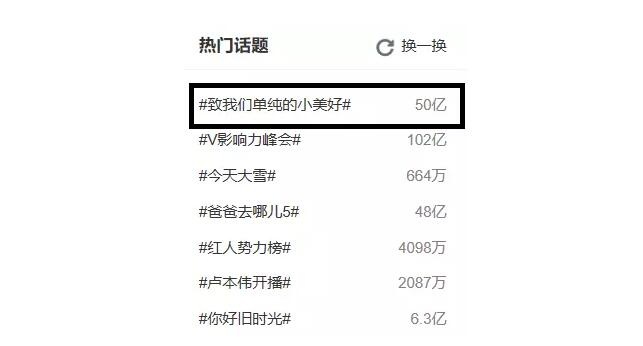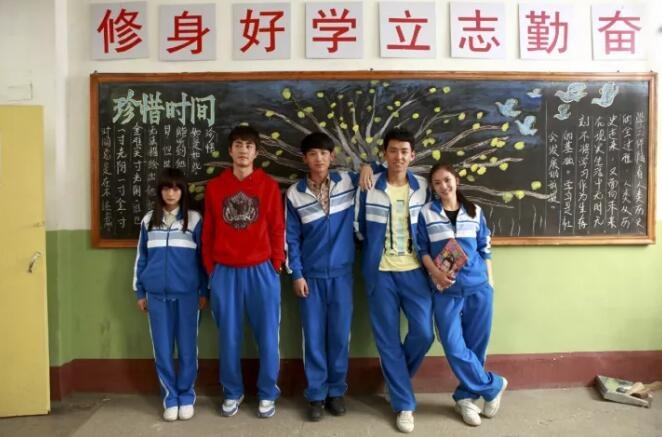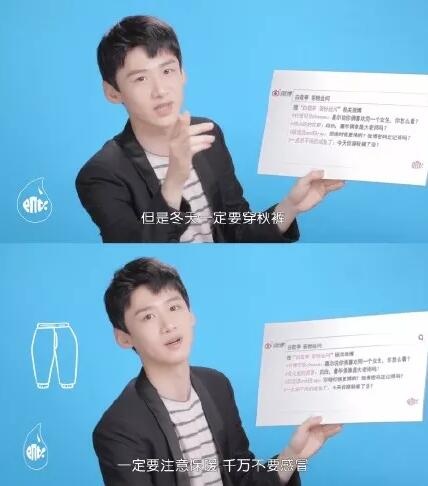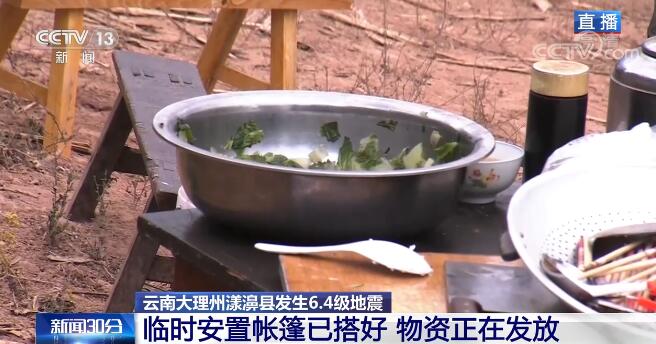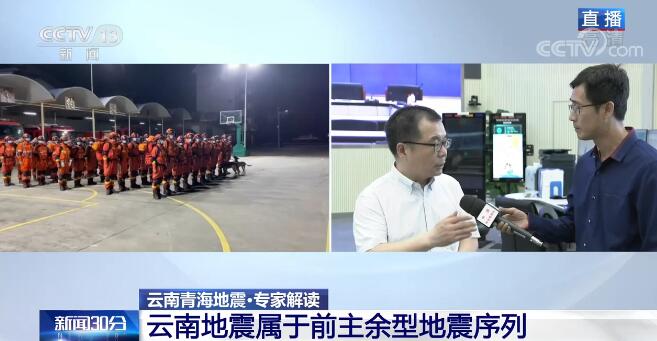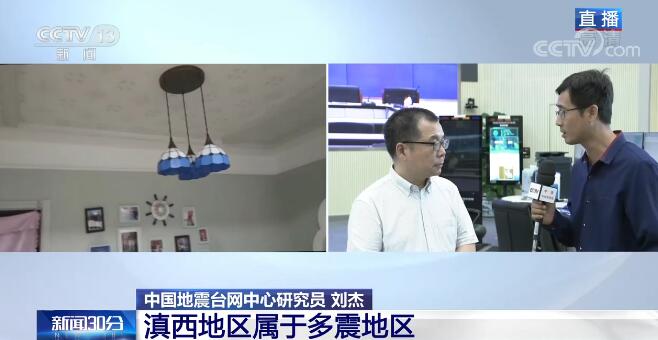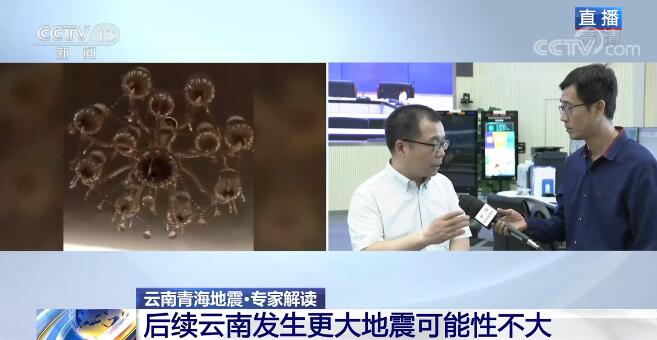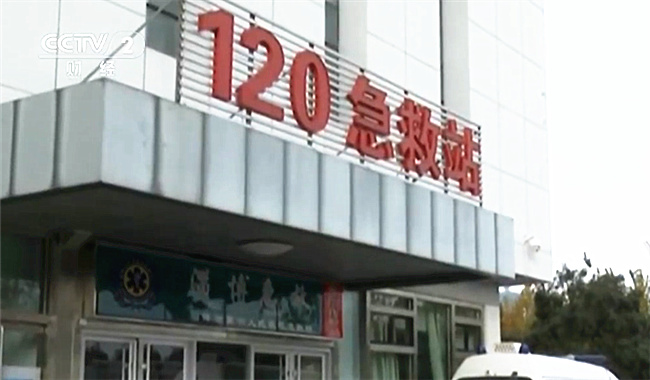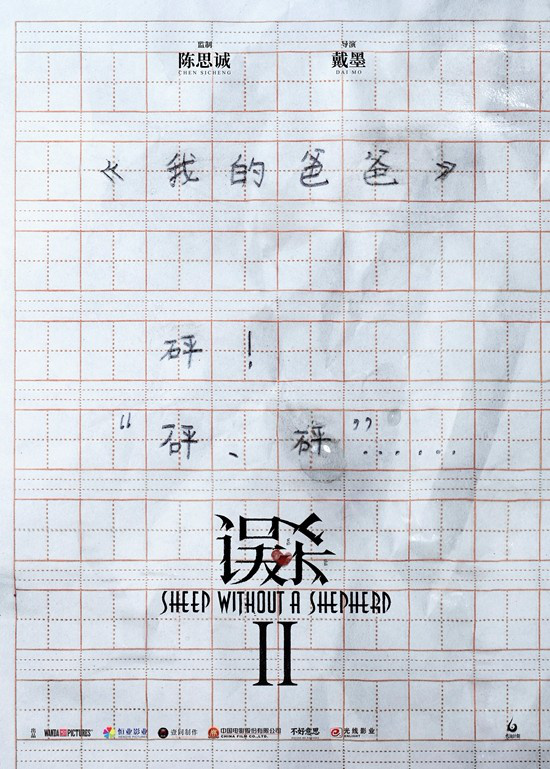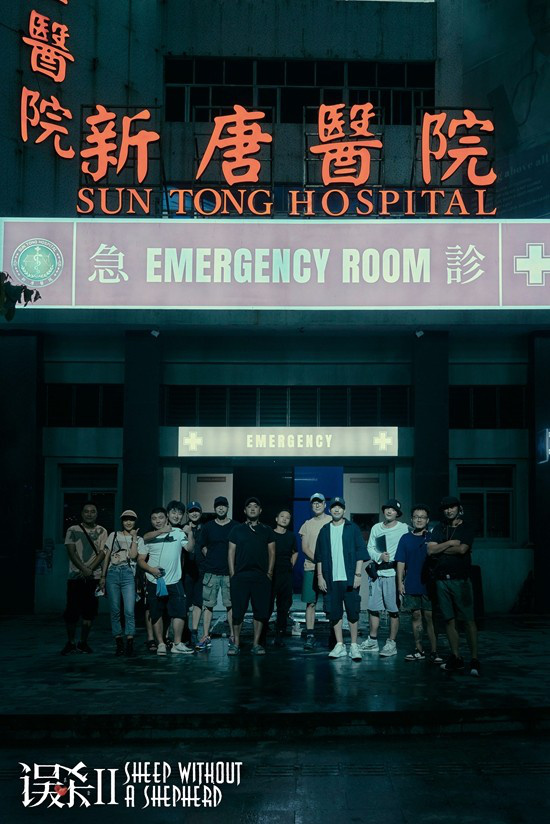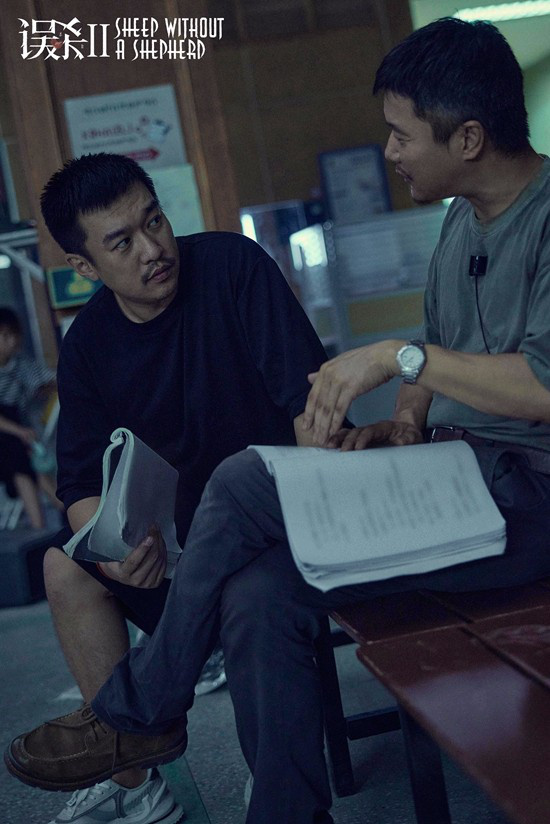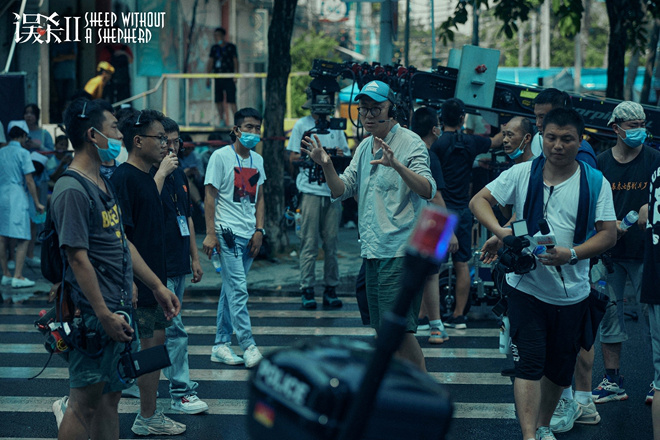Delegates:
Entrusted by the Municipal People’s Government, we will now2008Annual budget implementation and2009The report on the draft budget for 2008 is submitted to the General Assembly for deliberation, and CPPCC members and other people attending the meeting are invited to give their opinions.
One,2008Annual budget implementation
2008In, all districts, counties and departments in the city fully implemented the spirit of the 17th National Congress of the Communist Party of China and the Third Plenary Session of the 17th Central Committee, with Deng Xiaoping Theory and“Theory of Three Represents"Under the guidance of important thought, thoroughly implement Scientific Outlook on Development and conscientiously implement General Secretary Hu Jintao.“Two are at the forefront of the country."、“A vanguard"The important requirements and the spirit of important instructions on Tianjin’s work, resolutely implement the national macro-control policies and measures, in accordance with the ninth party congress and the third plenary session of the ninth municipal party Committee.“One two three four five six"The goal and thinking of work, forge ahead, work hard, achieve sound and rapid economic and social development, and successfully complete the financial budget tasks set by the First Session of the 15th National People’s Congress.
City’s fiscal revenue1490100 million yuan, an increase over the previous year.23.7%, complete the budget103.1%. Deduct the upper central income.588.1100 million yuan, local retained income901.9One hundred million yuan, of which the local general budget revenue675.6Billion yuan, government fund income.226.3100 million yuan. Plus central tax refund and transfer payment subsidies and other funds.182.7One hundred million yuan, when the city’s fiscal disposable income.1084.6100 million yuan. Plus last year’s balance124.7One hundred million yuan, the city’s total financial resources.1209.3100 million yuan.
City’s fiscal expenditure1063.4100 million yuan, an increase over the previous year.24.1%, complete the budget98.4%. Of which general expenditure867.8Billion yuan, growth25.4%; Government fund expenditure195.6Billion yuan, growth18.5%. After making ends meet, the budget balance145.9One hundred million yuan, of which the project funds are carried forward.137.2100 million yuan, mainly local construction project funds and central special subsidy funds; Budget net balance8.7100 million yuan, to be approved by the municipal and district people’s Congress Standing Committee after the final accounts, carried forward to this year.
Municipal fiscal revenue686.8100 million yuan, an increase over the previous year.22%, complete the budget101.9%. Deduct the upper central income.253.1100 million yuan, local retained income433.7One hundred million yuan, of which the local general budget revenue290.3Billion yuan, government fund income.143.4100 million yuan. Plus central tax refund and transfer payment subsidies and other funds.161.7100 million yuan, less financial transfer payments to districts and counties.46.6One hundred million yuan, the municipal fiscal disposable income.548.8100 million yuan. Plus last year’s balance78.9One hundred million yuan, the total financial resources of municipal finance.627.7100 million yuan.
Municipal fiscal expenditure548.4100 million yuan, an increase over the previous year.23.3%, complete the budget104.2%. Of which general expenditure419.8Billion yuan, growth26.1%; Government fund expenditure128.6Billion yuan, growth15.4%. After making ends meet, the budget balance79.3One hundred million yuan, of which the project funds are carried forward.78.7100 million yuan, mainly local construction project funds and central special subsidy funds; Budget net balance0.6100 million yuan, to be approved by the Standing Committee of the Municipal People’s Congress, carried forward to this year.
Municipal local retained income exceeded the budget at the beginning of the year.20.2100 million yuan, including road maintenance fees, sea area use fees, new construction land use fees and other special funds exceeded.18.4100 million yuan, in accordance with the relevant provisions of the arrangements for the construction and maintenance of urban infrastructure, the Olympic Games and the Davos Forum environmental comprehensive improvement projects; Excess of general financial resources1.8100 million yuan, mainly for increasing the income of urban and rural residents and supporting earthquake relief.
Financial revenue of Tianjin Economic and Technological Development Zone, Tianjin Port Bonded Zone and New Technology Industrial Park (hereinafter referred to as the three zones)274100 million yuan, an increase over the previous year.13.5%. fiscal expenditure119100 million yuan, an increase over the previous year.0.8%. Budget balance of three districts9.1One hundred million yuan, of which the project funds are carried forward.8.5100 million yuan, net budget balance.0.6100 million yuan.
In the past year, the fiscal and taxation departments at all levels in our city conscientiously implemented the deployment of the municipal party committee and the municipal government, actively adapted to the requirements of the new situation and new tasks, actively improved the mechanism of increasing fiscal revenue and reducing expenditures, and gave full play to the role of fiscal and taxation functions, and made new progress in all work.
(A) fiscal revenue to achieve steady and rapid growth.
Driven by the development and opening-up of Binhai New Area, the city has shown a good pattern of coordinated development at three levels, with the continuous expansion of economic aggregate and significant improvement of operation quality, which has laid a solid foundation for fiscal revenue increase. The energy accumulated by key industrialization projects organized and implemented on a large scale in our city is gradually released, which has played an increasingly important role in promoting steady and rapid economic growth, and the new growth points and support points of fiscal revenue have increased significantly.,It has played an important role in overcoming the impact of the international financial crisis, the slowdown of global economic growth and the increasing downward pressure on the economy. Finance and taxation departments at all levels actively respond to the development and changes of the situation, seriously study and formulate practical and effective measures, deeply tap the potential of increasing income, vigorously organize fiscal revenue according to law, and strive to ensure that all accounts receivable are collected. Local fiscal revenue growth in the city25.1%, higher than the national average growth rate.3.6Percentage points, municipal, 18 districts and counties and three districts increased respectively.24%、24.2%and30.4%. Binhai New Area will continue to play a leading role and complete local fiscal revenue.250.2Billion yuan, growth31%.
(B) the function of finance to promote the coordinated development of the three levels is effectively brought into play.
Focus on promoting the comprehensive reform of Binhai New Area, increase financial policy support, and actively promote the new area to increase reform and innovation in the fields of finance and land. Study and formulate preferential fiscal and taxation policies to support the accelerated development of the new district, increase financial capital investment, innovate investment and financing methods, expand the scale of investment and financing, and accelerate progress.“Liangganglianglu road"And other major infrastructure construction, accelerate the development and construction of new functional areas such as Dongjiang Bonded Port, Sino-Singapore Eco-city and Binhai High-tech Zone, and strive to enhance the service radiation function of the new area.
Comprehensive use of government investment, budget subsidies, loan interest subsidies and other financial policies, accelerate the construction of national biomedical international innovation park and civil aviation science and technology industrialization base, actively attract national key laboratories, R&D transformation centers, group headquarters and other institutions to settle in the new district, and support Airbus.A320With the construction of major projects, such as a series of aircraft assembly lines, the integration of one million tons of ethylene refining and chemical engineering, and the relocation of Tianjian, the scientific and technological innovation ability and development stamina of the new district have been significantly enhanced.
Adjust and improve the financial system in a timely manner, improve the incentive mechanism for increasing income, adjust the business tax of financial and insurance enterprises from municipal fixed income to sharing income between cities and counties, treat all the urban construction tax and education surcharge as fixed income of counties, support the adjustment and optimization of industrial structure in the central city, vigorously develop modern service industry and urban industry, support the comparative advantages of counties, vigorously develop characteristic economy, and strive to promote the coordinated development of Binhai New Area, comprehensively improve the central city and accelerate the development of counties.
(C) the role of finance in promoting sound and rapid economic development has been further improved.
Expenditure on urban infrastructure construction and maintenance394.8Billion yuan, growth23.3%. Taking the opportunity of co-hosting the Olympic Games and hosting the Summer Davos Forum, we will increase financial investment, make full use of market-oriented operation mode, strive to revitalize land resources, integrate all kinds of constructive funds, speed up the implementation of infrastructure construction and comprehensive environmental improvement, make significant progress in the comprehensive development of the upper reaches of Haihe River, complete the reconstruction and expansion project of tianjin railway station as scheduled, and build the subway.2、three、nineThe construction of Line 1 was accelerated, and the Tianjin trunk line project of South-to-North Water Transfer Project was officially launched. Complete comprehensive environmental improvement projects in key areas and key roads with high standards and renovate old buildings.50010,000 square meters, new green space.750010,000 square meters, the cumulative renovation of buses.3500Cars and taxis2.8Ten thousand vehicles, built.17A sewage treatment plant andthreeA reclaimed water plant, a new municipal underground pipe network.1300kilometre (km)The function of urban carrier has been further enhanced.
Science and technology expenditure28.7Billion yuan, growth29.2%. Further improve the system of scientific and technological innovation and accelerate its progress.twelveNational science and technology innovation platform construction, has been implemented.35A major project of independent innovation and industrialization, the first high-performance computer in China was delivered for use. Formulate and implement preferential fiscal and taxation policies, encourage enterprises to increase investment in research and development, add a number of engineering technology research centers and enterprise technology centers, and develop stem cell injections.81A new product, apply for a patent for invention126Pieces. Accelerate the implementation of the strategy of strengthening the city with talents, set up leading talents and introduce special funds, attracting a large number of outstanding talents at home and abroad.
Support enterprise development expenditureseventy-eightBillion yuan, growth31.5%. Focus on promoting structural adjustment, industrial upgrading and technological innovation, actively support the construction of major industrialization projects, and fully implement the enterprise income tax reform policy.,Promote the development of small and medium-sized enterprises and private economy. Implement fiscal and taxation policies to develop circular economy, set up special funds for energy conservation and emission reduction, and actively promote the waste heat recovery and transformation of Dagu Chemical Industry.51Construction of energy-saving projects, support for the establishment of Tianjin Emissions Exchange, and permission to carry out comprehensive pilot projects of emissions trading. We will implement the national policy of raising the export tax rebate rate, expand the scale of foreign trade development funds, and vigorously promote the steady growth of foreign trade exports. Implement fiscal and taxation policies to promote the development of modern financial industry, provide comprehensive services in all directions and in the whole process, attract a number of financial legal person institutions such as Minsheng Leasing Company and Korean Enterprise Bank to settle down, support the establishment of TEDA International Financial Investment Holding Company, Binhai International Equity Exchange and Tianjin International Economic and Financial Arbitration Center, successfully hold the Summer Davos Forum and the second China International Financing Fair for Enterprises, obtain approval for the establishment of the shipbuilding industry investment fund, establish the venture capital guiding fund, and achieve the goal of equity investment fund and venture capital fund.218Home, financial service system and innovation system have been continuously improved.
(D) The ability to ensure financial security and improve people’s livelihood has been significantly enhanced.
Social security and employment expenditure105.7Billion yuan, growth32.7%. Implement a proactive employment policy and a policy of entrepreneurship to promote employment, and increase the“4050”Personnel, zero-employment families and college graduates, support self-employment and self-employment, and create new jobs throughout the year.38Ten thousand people. Improve the social security system of coordinating urban and rural areas, improve the pension benefits of enterprise retirees, continue to make personal accounts for urban employees’ pension insurance, and establish a rural social pension insurance system; We will implement the basic medical insurance system for urban residents, improve the medical insurance measures for serious illness of migrant workers, and raise the financial subsidy standard for the new rural cooperative medical system. The participation rate of farmers in the city will reach.97.6%. We will improve the minimum living security and special care and relief subsidy standards for urban and rural residents, expand the scope of special hardship relief, and establish a linkage mechanism between the price increase of basic necessities and the living allowance for people in need. Increase financial investment, vigorously promote the construction of affordable housing, and timely introduce preferential tax policies to encourage residents to buy houses.13Ten thousand low-income families provide housing security. Formulate and implement fiscal policies to increase people’s income, promote enterprises to establish a synchronous growth mechanism of wages and benefits, steadily promote the reform of income distribution system in administrative institutions, and accelerate the implementation of housing monetization distribution policy. Timely disbursement of fuel subsidies such as bus passenger transport, taxis and heating enterprises to reduce the burden of rising energy prices on enterprises and residents.
expenditure on education141Billion yuan, growth29.2%. Implement the funding guarantee mechanism for compulsory education and fully implement it.“waive tuition and miscellaneous fees, supply free textbooks, and grant living allowances for boarders from financially disadvantaged families"Policy, improve the quota standard of public funds in primary and secondary schools.,Schools that take the lead in implementing compulsory education in urban and rural areas provide textbooks free of charge. Vigorously develop vocational education, accelerate the construction of vocational education training base, focus on supporting the construction of national demonstration schools such as vocational universities and Sino-German vocational and technical colleges, and successfully hold the first national vocational college skill competition. Full implementation of higher education investment“the 12th Five-Year Plan"Plan, accelerate58The construction of key disciplines, improve the financial aid system for students from poor families in ordinary colleges and vocational colleges, and promote educational equity.
Expenditure on cultural and sports media18Billion yuan, growth21.2%. We will increase investment in the construction of cultural and sports facilities, focus on supporting the reconstruction and expansion projects of large-scale cultural facilities such as Tianjin Library, Confucian Temple and Xiaobailou Concert Hall, fully complete the planning of exhibition hall layout projects, and the digital transformation of radio and television and the sharing of cultural information resources are progressing smoothly. The Olympic Sports Center Stadium is put into use, which fully guarantees the funding needs of the Olympic Games organization and torch relay. We will improve the public cultural service system, support the free opening of public cultural facilities such as museums and memorial halls, accelerate the implementation of cultural service projects such as community and township comprehensive cultural stations, support the creation of outstanding works and professional art troupes to perform at the grassroots level, and continuously enrich the spiritual and cultural life of the masses.
Medical and health expenditure41.9Billion yuan, growth27%. Increase investment in health care, actively integrate medical and health resources, and vigorously promote the construction of key projects such as Anding Hospital and Central Obstetrics and Gynecology Hospital. Improve the public health service system and provide it to urban and rural residents free of charge.18Public health services, support11This vaccine will be included in the national immunization program, and infants who are sick from eating tainted milk powder will be examined and treated free of charge, and the urban and rural family planning service network will be improved to expand the coverage of public health services.
Public security expenditure65.8Billion yuan, growth22.4%. Accelerate the construction of public safety system, ensure the funding needs of public security traffic control, fire control, food and drug safety and other departments, increase investment in special equipment such as fire prevention, disaster prevention, riot prevention and safety testing, and improve public emergency response and disaster reduction and resilience.
(E) financial support for the construction of new countryside has been increasing.
Expenditure on supporting agriculture38.5Billion yuan, growth43.9%. Increase investment in agricultural infrastructure construction, build and rebuild a number of farmland water conservancy facilities, vigorously organize the implementation of water-saving irrigation projects, and add facility agriculture.10Ten thousand mu, increase the area of water-saving irrigation.25Ten thousand mu. Increase investment in agricultural science and technology innovation, start the construction of coastal agricultural science and technology park and top ten seed industry bases, and support the deep processing of agricultural products.80A transformation and popularization project of agricultural scientific and technological achievements. Actively carry out policy agricultural insurance such as planting and breeding, and accelerate the accidental injury of farmers’ houses, family property and personal injury.“three basic insurances"Pilot, fully implement the fiscal and taxation policies and measures to support the development of dairy industry, and improve the ability of agricultural production to resist disasters. Establish a government-supported financing platform for bank-enterprise cooperation, loan guarantee and insurance guarantee, and guide more credit funds and social funds to invest.“agriculture, rural areas, and rural residents". We will fully implement the policies of strengthening agriculture and benefiting farmers, improve the methods of direct subsidies for grain, comprehensive direct subsidies for agricultural materials, subsidies for improved varieties and subsidies for the purchase of agricultural machinery, implement the project of improving farmers’ quality and increasing the income of low-income farmers, and increase farmers’ income through multiple channels. Actively support the construction of demonstration small towns focusing on the exchange of housing sites, accelerate the extension of water, electricity and other infrastructure to rural areas, continue to implement rural drinking water safety and pipe network household projects, build a number of rural public service facilities, and build and transform rural roads.1000kilometre (km)Afforestation22.7Ten thousand mu, the rural production and living environment has improved significantly.
Delegates, according to the decision-making arrangements of the CPC Central Committee and the State Council on counterpart support for post-earthquake recovery and reconstruction, our city should2008For three consecutive years since, each year according to the local fiscal revenue of the previous year.1%The scale of financing, earmarked for counterpart support in ningqiang county and Lueyang County, Shaanxi Province, is expected to be needed.twenty100 million yuan, and strive to basically achieve the goal of three-year post-disaster recovery and reconstruction in two years. Financial departments at all levels actively raise funds, and allocate funds by reducing departmental budgets, adjusting special expenditures, and using social donations.nine100 million yuan, mainly used for housing, infrastructure, schools and hospitals for victims and other subsidy projects. At present, the counterpart support work is progressing smoothly.
On the whole,2008In, the financial budget of our city was well implemented, the scale of revenue and expenditure was further expanded, and the ability to guarantee economic and social development was obviously enhanced. At the same time, there are still some problems that can’t be ignored in budget implementation and financial work, which are mainly manifested in the following aspects: the mechanism of fiscal revenue increase is not perfect, the foundation of revenue increase is not stable enough, the scale of revenue is not large, the local financial resources are less, and the dependence on a few industries is strong, so it is necessary to make great efforts to strengthen the construction of financial resources and tax sources and cultivate more revenue growth points; There are many new expenditure items and a large amount in budget implementation, and extravagance and waste still exist, which affects the binding and seriousness of departmental budgets to some extent. At the same time, the use of financial funds is scattered, the market-oriented financing ability is insufficient, and the contradiction of balance of payments is more prominent; The financial development of counties is unbalanced, the income structure of some counties is not reasonable, the disposable financial resources are small, and the financial operation is difficult; The scientific and refined tax management system is not perfect, and there are weak links in tax collection and management, so the tax service level needs to be further improved. We must attach great importance to these problems and actively take practical measures to solve them in our future work.
Second,2009Draft annual budget
20092008 is the year to meet the major challenges of the international and domestic environment and realize the Party Committee.“One two three four five six"The first stage of the goal is a crucial year for the task. We must conscientiously implement the spirit of the Fifth Plenary Session of the Ninth Municipal Committee, in accordance with“Maintain growth, tide over difficulties, and improve the level."Requirements, comprehensively do a good job in all financial work, and promote steady and rapid economic development.
(A) a comprehensive grasp of the financial and economic situation
At present, the international financial crisis is spreading rapidly, the world economy continues to be in a downturn, the external environment for China’s development is more severe, the economic operation difficulties are increasing sharply, and the difficulty of increasing fiscal revenue is further increased. The CPC Central Committee and the State Council assessed the situation, implemented a proactive fiscal policy and a moderately loose monetary policy in a timely manner, and introduced a series of macro-control measures to encourage investment and structural tax reduction, making every effort to maintain steady and rapid economic development. Judging from the implementation of fiscal policies in our city, the first is to implement the VAT transformation policy, which will include the input tax on equipment purchased by enterprises in the VAT deduction range, and it is expected to give enterprises tax reduction.45100 million yuan. Second, the income tax rate of domestic-funded enterprises is determined by33%Drop to25%, high-tech enterprises reduced by15%Income tax is levied at the tax rate, which is expected to reduce taxes for enterprises.33100 million yuan. Third, the interest income tax on savings deposits will be temporarily exempted, the business tax and deed tax on ordinary housing transactions will be reduced, and the land value-added tax and stamp duty on residential housing transactions will be reduced. It is expected that tax cuts will be given to residents and units.twenty100 million yuan. Fourth, the reform of fuel taxes and fees will be implemented, and six fees, such as road maintenance fees and road passenger and freight surcharges, will be abolished. The fuel consumption tax instead of being levied will be levied in the refined oil price, which is expected to reduce the fees for enterprises, institutions and residents.22100 million yuan. The above fiscal and taxation policies and measures will reduce taxes and fees for enterprises, institutions and residents.120100 million yuan, which will play an important role in further expanding domestic demand and promoting the steady and rapid economic growth of our city.
Since the Ninth Party Congress, the Municipal Party Committee has made a series of decision-making arrangements and adopted a series of major measures. The city has made great achievements in economic and social development, and has the material foundation and favorable conditions for accelerating development. In particular, Binhai New Area has become a new growth pole when it is incorporated into the national development strategy, and coordinated development at three levels has formed a new pattern of multi-point support and diversified development. The development stamina based on a large number of high-level projects has been significantly enhanced, which will surely effectively boost fiscal revenue to achieve stable growth. We must seize opportunities, meet challenges, give full play to fiscal and taxation functions, and strive to provide financial support and policy support for sound and rapid economic and social development.
(two) the overall requirements of budget arrangements and financial work
Fully implement the spirit of the 17th National Congress of the Communist Party of China and the Third Plenary Session of the 17th Central Committee, with Deng Xiaoping Theory and“Theory of Three Represents"Under the guidance of important thought, thoroughly implement Scientific Outlook on Development and General Secretary Hu Jintao.“Two are at the forefront of the country."、“A vanguard"Important requirements and the spirit of important instructions on Tianjin’s work, thoroughly implement the spirit of the Ninth Party Congress and the Fifth Plenary Session of the Ninth Municipal Party Committee, in accordance with the Municipal Party Committee“One two three four five six"We should conscientiously implement the proactive fiscal policy, give full play to the role of fiscal functions, accelerate the development and opening up of Binhai New Area, vigorously support the coordinated development of the three levels, actively promote the transformation of development mode and structural adjustment, and strive to promote steady and rapid economic development. Adhere to the principle of increasing revenue, reducing expenditure and making overall plans, adjust and optimize the structure of fiscal expenditure, increase investment in the public sector, and effectively protect and improve people’s livelihood. Deepen the reform of the fiscal and taxation system, improve the financial system and mechanism, actively innovate the financial management model, strengthen financial supervision and management, and strive to promote the scientific development and harmonious development of Tianjin.
(3) Budget arrangements for fiscal revenue and expenditure
According to the overall requirements of financial work and the main expected goals of economic and social development,2009Budget arrangement of the city’s fiscal revenue in1668.8100 million yuan, an increase over the previous year.12%Strive to exceed the income in budget execution. The city’s fiscal revenue deducted from the central revenue.673.2100 million yuan, local retained income995.6One hundred million yuan, of which the local general budget revenue756.6Billion yuan, government fund income.239100 million yuan. Plus the expected central tax rebate and transfer payment subsidies and other funds.165.6100 million yuan, the balance of last year145.9100 million yuan, the total budget of fiscal expenditure1307.1100 million yuan, an increase over the actual expenditure of the previous year.22.9%, in which the general expenditure budget1024.9Billion yuan, growth18.1%; Expenditure budget of government funds282.2Billion yuan, growth44.3%.
The city’s expenditure budget is divided according to the classification of government revenue and expenditure: education164.9Billion yuan, growth17%; science and technology33.2Billion yuan, growth16%; Culture, Sports and Media20.2Billion yuan, growth12%; health care50.3Billion yuan, growth20%; Agriculture, forestry and water conservancy45.7Billion yuan, growth18.5%; Social security and employment117.3Billion yuan, growth15%; environmental protection11.2Billion yuan, growth20%; Infrastructure construction and maintenance management498.1Billion yuan, growth30.8%; transportation29.2Billion yuan, growth21.2%; Industrial and commercial financial affairs97Billion yuan, growth24.4%; Funds of administrative institutions178.1Billion yuan, growth9.8%; Post-earthquake recovery and reconstruction6.8100 million yuan.
Municipal fiscal revenue budget755.5100 million yuan, an increase over the previous year.10%. Deduct the upper central income.289.2100 million yuan, local retained income466.3One hundred million yuan, of which the local general budget revenue325.2Billion yuan, government fund income.141.1100 million yuan. Plus the expected central tax rebate and transfer payment subsidies and other funds.146.8100 million yuan, the balance of last year79.3100 million yuan, less financial transfer payments to districts and counties.52.4100 million yuan, the municipal fiscal expenditure budget640100 million yuan, an increase over the actual expenditure of the previous year.16.7%, in which the general expenditure budget480.6Billion yuan, growth14.5%; Expenditure budget of government funds159.4Billion yuan, growth23.9%.
Municipal expenditure budget is divided according to the classification of government revenue and expenditure: education54.6Billion yuan, growth15%; science and technology23.5Billion yuan, growth15%; Culture, Sports and Media13.9Billion yuan, growth14%; health care19.8Billion yuan, growth23.5%; Agriculture, forestry and water conservancy28.7Billion yuan, growth20%; Social security and employment85.8Billion yuan, growth15%; environmental protection7.1Billion yuan, growth15.2%; Infrastructure construction and maintenance management253.4Billion yuan, growth22.6%; transportation27.1Billion yuan, growth11.7%; Industrial and commercial financial affairs19.9100 million yuan, down11.9%; Funds of administrative institutions88Billion yuan, growth11.4%; Post-earthquake recovery and reconstruction6.8100 million yuan.
Fiscal revenue budget of the three districts312.4100 million yuan, an increase over the previous year.14%; Financial expenditure budget146.7100 million yuan, an increase over the actual expenditure of the previous year.23%.
Generally speaking, this year’s fiscal revenue budget takes into account the steady and rapid economic and social development, the development and opening up of Binhai New Area, the accelerated construction of major industrialization projects, and the strengthening of tax collection and management, as well as the negative impact of the state’s policy of encouraging investment and stimulating consumption on fiscal revenue; The fiscal expenditure budget comprehensively considers the expenditure needs of promoting economic and social development, improving people’s livelihood and promoting rural reform and development, and embodies the principle of being active and steady. In the implementation of the budget, we should vigorously organize fiscal revenue, adjust and optimize the expenditure structure, concentrate funds to ensure key expenditures, and ensure a balanced budget for the whole year.
Third, work hard and work hard to ensure the completion of the whole year.
Revenue and expenditure budget task
Finance and taxation departments at all levels should, in accordance with the requirements of the Fifth Plenary Session of the Ninth Municipal Committee, further enhance their sense of hardship and responsibility, deepen fiscal and taxation reform, strengthen financial management, blaze new trails, overcome difficulties, creatively carry out their work, and strive to promote sound and rapid economic and social development.
(1) Effectively strengthen revenue collection and management to ensure sustained and steady growth of fiscal revenue.
Fully grasp the impact of macroeconomic trends, national regulatory policies and regional economic development and changes on fiscal revenue, carefully analyze and study key and hot issues in economic operation, and formulate effective measures to increase revenue in time to ensure the synchronous growth of fiscal revenue and economy. Fully grasp the investment and project progress of major industrialization projects, strengthen the whole service and follow-up analysis of projects, coordinate and solve relevant fiscal and taxation problems in time, vigorously cultivate financial resources and tax sources, and strive to form a pattern of multi-point support and multi-polar growth in fiscal revenue increase.
Accelerate the improvement of modern tax collection and management system, further improve the benign interaction mechanism of tax economic analysis, enterprise tax assessment, key tax source monitoring and tax inspection, comprehensively implement scientific and refined tax management, actively promote the construction of tax administrator platform, gradually promote the application of tax-controlled collection devices, strengthen the management of taxes by tickets, deeply tap the potential of tax collection and management, increase tax inspection, crack down on tax evasion, and effectively plug the loopholes in tax collection and management. Improve the control mechanism of tax sources, strengthen the coordination between finance and taxation, industry and commerce, housing management, transportation and other departments, improve the information networking and data exchange system, continuously improve the level of income control, and strive to achieve all accounts receivable.
Establish and improve the fiscal revenue target responsibility system, further improve the decision-making objectives, implementation responsibilities and assessment and supervision system of the fiscal and taxation departments, refine the revenue target responsibility, and earnestly ensure that everyone has a task and implement it at all levels. In accordance with the administrative divisions and the division of responsibilities of the competent departments of enterprises, the fiscal revenue growth targets of regions and departments are determined, and they are included in the assessment scope of the city’s work targets, and the implementation situation is announced on schedule, and efforts are made to form a situation in which all districts, counties and departments jointly promote fiscal revenue.
(2) Give full play to the role of financial functions and strive to promote steady and rapid economic development.
Accelerate infrastructure construction. Conscientiously implement the proactive fiscal policy, increase financial investment, integrate all kinds of constructive funds, attract social investment, accelerate the development and construction of Binhai New Area, focus on supporting the construction of major functional areas such as Sino-Singapore Eco-city, Dongjiang Bonded Port, Yujiapu Financial and Business Center, support the expansion of the main channel of Tianjin Port and the second phase expansion of Binhai International Airport, and continuously enhance the service radiation function of the new area. Accelerate the construction of government investment and financing platform, raise construction funds through multiple channels, speed up the improvement of modern transportation system, and focus on supporting Beijing-Shanghai high-speed railway, Tianjin-Qinhuangdao and Tianjin-Baoding passenger dedicated lines and subways.2、three、nineLine 1 and other rail transit construction, support the construction of highway transportation such as Haibin Avenue, Tianjin Avenue and Tuanbo Expressway, support the construction of transportation facilities such as tianjin railway station underground transportation hub and Tianjin West Railway Station, and accelerate the upgrading of urban carrier functions. according to“Two-level government and three-level management"Mode, to further improve the methods of raising funds for urban management, make full use of market-oriented operation mechanism, actively promote a new round of comprehensive improvement of city appearance and environment, and focus on the transformation and upgrading of water parks and South Cuiping Parks.sixPark, comprehensive renovation of the tower, the temple of literature, etc.fiveIn this area, Weijin South Road and Changjiang Road will be transformed and improved.14Urban roads, renovation.102Piece lane road, comprehensive management of urban-rural junction and urban village. Increase investment in environmental protection and ecological construction, build and rebuild a number of sewage treatment plants and garbage disposal facilities, support key projects such as coal-fired boiler renovation and water environment management, and accelerate the implementation of greening on both sides of expressways.10A afforestation project construction, constantly optimize and beautify the urban and rural environment.
Vigorously support the accelerated development of advanced manufacturing and modern service industries. Adjust and improve the fiscal policy, increase financial investment, actively promote the construction of major industrial projects through government subsidies, loan interest subsidies, tax incentives, etc., and focus on supporting a new generation of launch vehicles.300Ten thousand tons of shipbuilding, ZTE’s northern base and other projects were accelerated. Fully implement the measures to promote the development of service industry74A fiscal and tax preferential policies, actively support.twentyThe construction of a major modern service industry project will vigorously support the development of high-end service industries such as modern finance, international logistics, tourism exhibitions, e-commerce and service outsourcing. We will increase support for small and medium-sized enterprises, increase government guarantee funds, continuously improve financing conditions for enterprises, improve the social service system, and support the accelerated development of small and medium-sized enterprises and the private economy.
Actively promote scientific and technological innovation and energy conservation and emission reduction. Further improve fiscal and taxation support policies, increase financial investment in science and technology, accelerate the improvement of the scientific and technological innovation system, support the construction of a number of key laboratories, engineering laboratories, enterprise technology centers and engineering centers, promote the development of scientific and technological business incubators, and build a scientific and technological innovation support platform. Make full use of comprehensive financial means, accelerate the construction of R&D transformation bases and scientific and technological industrialization bases, support major independent innovation projects such as digital equipment and electric vehicles, and promote drug R&D and manufacturing.15Independent innovation projects to achieve industrialization. Encourage venture capital, support the introduction of leading talents and optimize the environment for innovation and entrepreneurship. Increase investment in energy conservation, support energy conservation and consumption reduction in key industries such as metallurgy, petrochemical and electric power, accelerate the construction of Ziya circular economy industrial park, and vigorously develop circular economy.
(C) increase investment in the field of people’s livelihood and promote the building of a harmonious society
We will implement the strategy of expanding employment and promoting employment development through entrepreneurship, comprehensively use government subsidies, tax reduction and exemption, loan interest subsidies and entrepreneurship training, actively develop public welfare posts, encourage enterprises to absorb laid-off and unemployed people, and support self-employment and self-employment. Establish an employment assistance system for all urban and rural disadvantaged groups, fully implement the social insurance subsidy policy, support the creation of employment service carriers, and expand the scale of reemployment personnel.
Increase financial investment and improve the social security system. We will continue to improve the pension benefits for enterprise retirees, establish a pension security system for urban and rural residents and a basic medical insurance system for residents, and raise the subsidy standard for new rural cooperative medical care. We will implement social pooling of civil servants’ medical subsidies, improve the subsidy standards of public institutions, and implement the docking of medical assistance and basic medical insurance. We will fully implement the urban and rural subsistence allowances and poverty relief systems, continue to raise the subsidy standards for subsistence allowances and special care recipients, and further improve the linkage mechanism between the price increase of basic necessities and the living allowance for people in need. We will improve the housing security mechanism for low-income families, expand the scope of security, raise security standards, increase the scale of affordable housing construction, and strive to improve the living conditions of low-and middle-income people. Improve the level of socialized service for the aged. We will adjust and improve policies and measures to increase the income of urban and rural residents, improve and improve the normal wage growth mechanism of enterprise employees and the normal adjustment system of welfare benefits, further standardize subsidies for civil servants, and promote the reform of the income distribution system of public institutions.
Adhere to the strategy of giving priority to education and support the balanced and coordinated development of education at all levels and types. Accelerate the implementation of performance pay and modernization standards in compulsory education schools, continue to raise the standard of public funds, and improve the free compulsory education system in urban and rural areas. Accelerate the construction of experimental areas and training bases for vocational education reform, promote the gathering of vocational colleges and the sharing of educational resources, and start the construction project of new vocational education areas. Actively support the construction of key disciplines, key laboratories and key talents in colleges and universities, and promote key universities.“211”Project, improve the student financial aid system in colleges and vocational colleges.
Actively promote the reform of the medical and health system, improve the government compensation mechanism for public health, strengthen the prevention and treatment of major diseases and key infectious diseases and chronic diseases, and improve urban and rural areas18A public health service subsidy standard, free of charge for26010,000 women of school age should have specialist physical examinations, and the construction of district and county centers for disease control and prevention should be accelerated.,We will fully implement the policy of supporting and rewarding family planning. Vigorously promote the adjustment of the layout of health resources, build a central obstetrics and gynecology hospital, actively support the construction of key projects such as Tianjin Hospital, Chest Hospital and Nankai Hospital, further improve the urban community health service system, and improve the three-level rural health service network. We will improve the financial compensation mechanism of municipal public hospitals above the second level, fully implement online centralized procurement of drugs by medical institutions, and support community health and medical service institutions to implement drugs.“Zero difference rate"Sales, reduce the price of drugs, and strive to alleviate the problem of people’s difficulty in seeing a doctor, expensive medical treatment, and the use of safe drugs.
Increase investment in public welfare cultural construction, establish a public cultural service system covering the whole society, actively support the construction of key cultural facilities such as Yangliuqing New Year Picture Art Center and Li Shutong Memorial Hall, and accelerate the implementation of public cultural service projects such as rural film screening and farmer’s bookstores. Formulate and implement preferential fiscal and taxation policies, promote the restructuring of cultural industries, and actively support the cultural product market and the construction of factor markets. Accelerate the transformation and improvement of key sports venues and facilities, and actively do a good job in the firstnineUniversiade and the firstsixPreparations for the 2008 East Asian Games, support for the preparation of the first11The third national games. Increase public safety investment, improve emergency response mechanism, improve the level of modern equipment, and comprehensively promote the construction of a safe Tianjin.
(4) Consolidate and improve the policy of strengthening agriculture and benefiting farmers, and accelerate rural reform and development.
Improve the agricultural investment guarantee mechanism, ensure that the growth rate of financial investment in agriculture at all levels is higher than the growth rate of recurrent income, substantially increase the investment in rural infrastructure construction and social development, increase the proportion of government land transfer income and farmland occupation tax for agriculture, improve the financial subsidies for agricultural insurance, agricultural product price protection and other systems, further improve agricultural subsidy policies, raise subsidy standards and expand the scope of subsidies. Continue to support farmers’ quality education projects, increase farmers’ vocational skills training, enhance the employability of rural surplus labor, and continuously broaden the channels for farmers to increase their income.
Further strengthen the construction of agricultural infrastructure focusing on farmland water conservancy, vigorously develop modern agriculture and speed up construction.twelveA modern agricultural demonstration park and33A breeding demonstration park, new facility agriculture.10Ten thousand mu. Implement the project of benefiting farmers through science and technology, improve the transformation and popularization mechanism of agricultural scientific and technological achievements, and improve the level of agricultural science and technology and research and development. Support the development of non-agricultural industries, increase special support funds for rural industries, improve the financial discount policy, and focus on supporting district and county development zones, township industrial parks and major projects to accelerate construction. We will increase support for rural financial policies, establish a rural credit guarantee mechanism with government support, multi-party participation and market operation, expand cooperation between banks and governments, and guide more credit funds and social funds to invest in rural areas.
We will expand the scope of public finance to cover rural social undertakings, and increase the funds for education, health, culture and other undertakings for rural areas, and strive to achieve equalization of urban and rural public services. We will continue to shift the focus of major infrastructure construction and capital use to rural areas, further improve the urban and rural transportation system, and accelerate the implementation of rural highway construction and renovation projects. Actively support key shelterbelts, irrigation area management, drinking water safety, garbage and sewage treatment and other projects, vigorously promote the construction of demonstration small towns and civilized ecological villages, and accelerate the process of rural urbanization.
(5) Formulating and implementing comprehensive fiscal and taxation policies to solve practical problems for enterprises.
Increase financial investment in stabilizing economic operation, integrate all kinds of special funds, support the establishment of loan guarantee funds in all districts and counties, improve the loan guarantee system for small and medium-sized enterprises, encourage financial institutions to increase the scale of credit supply, and focus on supporting enterprises with market demand, enterprises with great development potential and projects with quick investment results to alleviate the temporary difficulties of some enterprises. Adjust the use direction of financial industry development funds. At present, we mainly give play to the guiding role of financial funds by means of loan discount, and enlarge the scale and use effect of funds. Encourage the society to set up loan guarantee institutions, give support through capital injection, risk compensation, tax relief and other ways, and improve the social service system for small and medium-sized enterprises.
Take active measures to reduce the burden on enterprises and stabilize the employment situation.2009In 2008, the four social insurance rates for urban workers’ basic medical care, unemployment, work injury and maternity were appropriately reduced for enterprises in difficulty. Enterprises in difficulty are allowed to delay the payment of social insurance premiums within a certain period of time, and enterprises in difficulty who adopt on-the-job training, shift work, salary negotiation and other measures to stabilize the workforce are given unemployment insurance subsidies and post subsidies for a certain period of time through the use of unemployment insurance funds; For enterprises to carry out on-the-job training costs beyond the pre-tax expenses limit, with special funds for re-employment to give appropriate support.
Implement the new announcement of the state to cancel and stop the collection100An administrative fee policy, the city will cancel and stop collecting land registration fees, etc.nineFees, and strive to reduce the burden on enterprises. Actively support enterprises in our city to innovate brands, products and intellectual property rights. Government procurement adopts public bidding, invitation bidding, competitive negotiation and inquiry procurement, and gives priority to local products and services under the same conditions. Actively organize the implementation of home appliances to the countryside activities, to buy household appliances into the scope of promotion, according to the sales price.13%Give financial subsidies. Encourage the sale of commercial housing, give preferential treatment to reduce deed tax for individuals to buy ordinary commercial housing, and give business tax reduction and exemption policy for individuals to transfer ordinary housing within a certain period of time.
(6) Deepen the reform of the financial management system and accelerate the establishment of a financial operation mechanism conducive to scientific development.
Actively innovate the financial management mode, vigorously promote the reform of government investment and financing, give full play to the guiding role of fiscal policy and financial funds, further improve the market-oriented operation mechanism, speed up the establishment of government investment and financing platforms, raise funds through multiple channels and diversification, revitalize urban resources, improve the land reserve system, expand the scale of government revenue, and strive to achieve overall balance, virtuous circle and rolling development of construction projects, so as to provide a stable source of funds for urban infrastructure and ecological environment construction.
We will strengthen expenditure management in an all-round way, actively adjust and optimize the structure of fiscal expenditure, vigorously reduce general and consumable expenditures such as conference fees, car purchase fees, reception fees and overseas expenses, implement a policy of zero growth of public funds, concentrate financial resources on major projects that have a bearing on the overall economic and social development, and effectively spend money on ideas and on the cutting edge. Strengthen the control of expenditure budget process, strictly manage the examination and approval of new expenditure items, and all relevant departments should make overall plans to solve the new expenditure items outside the budget in principle from the department’s cut-off funds, and generally no additional budget will be added to the finance, so as to effectively enhance the binding and seriousness of the budget.
Improve the performance evaluation system, deepen the reform of budget management system such as departmental budget, centralized treasury receipt and payment, and government procurement, establish an interactive mechanism combining performance evaluation with budget arrangement and fund allocation, implement the management mode of bundling budget with performance and linking performance with performance, and continuously improve the scientific, normative and effective financial management.
Delegates,2009The financial operation in is facing unprecedented difficulties, and the task of increasing revenue and reducing expenditure is very heavy. We must, under the leadership of the Municipal Party Committee and the Municipal Government, with the supervision and support of the Municipal People’s Congress, strengthen our confidence, work hard, take the initiative to meet challenges, do a solid job, strive to create a new situation in financial work, and make new contributions to the realization of Tianjin’s scientific development, harmonious development and pioneering development.







